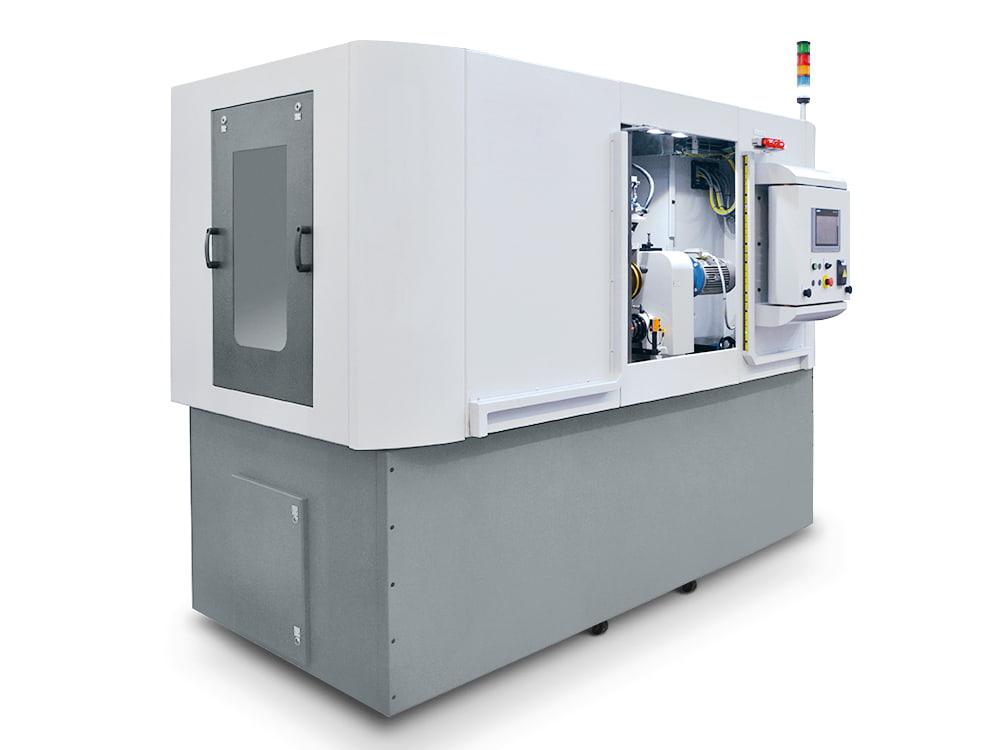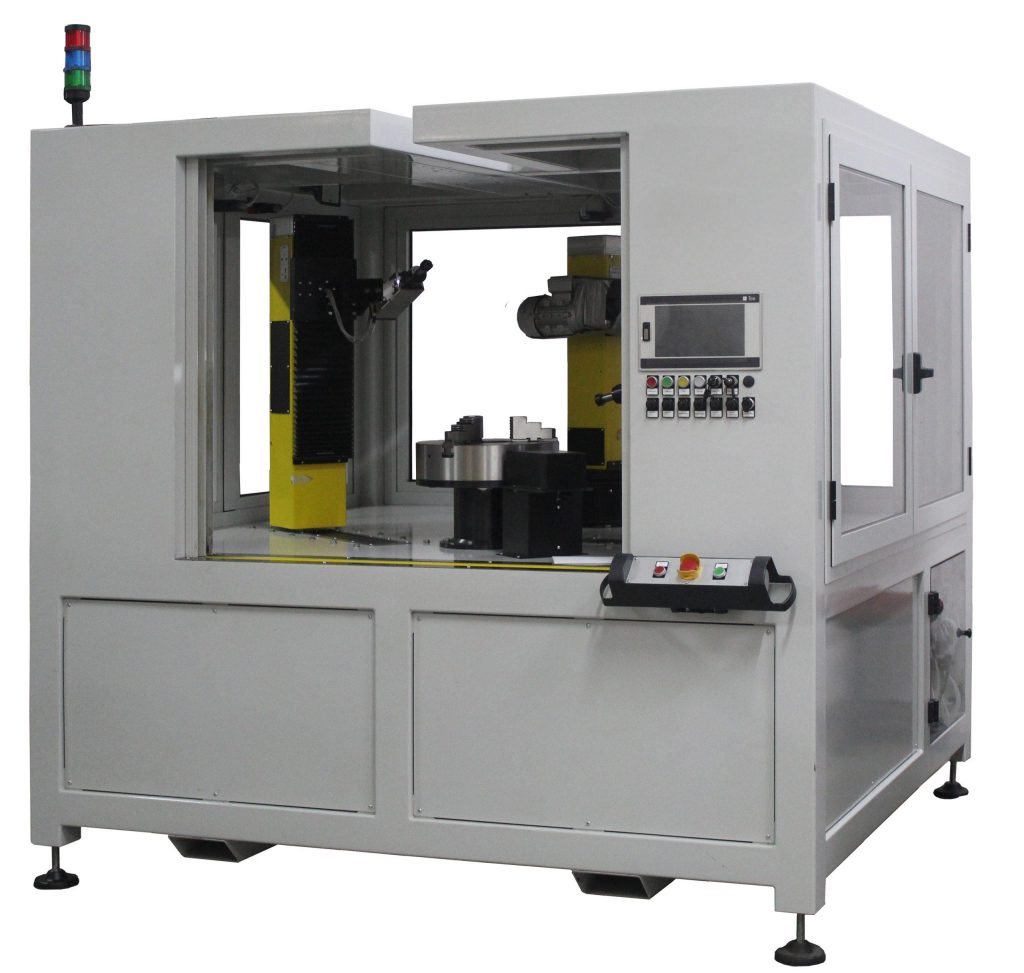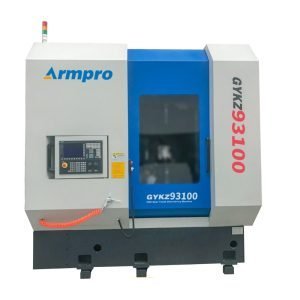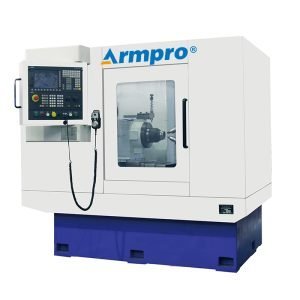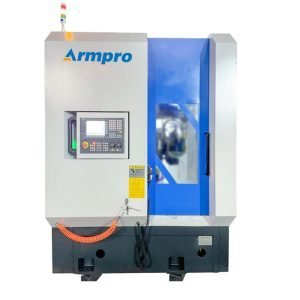How Automotive Companies Enhance Production with CNC Gear Chamfering
As machining experts with years assisting automotive manufacturers, we’ve seen firsthand the incredible impact CNC gear chamfering has on production. Perfectly angled precision ground edges might seem trivial, but they transform gear performance and durability. Adopting automated chamfering unlocks game-changing benefits for vehicle builders.
So,what is chamfering and the chamfering machine uses? Here, we’ll explore real-world examples of automakers utilizing CNC chamfering to reach new heights in efficiency, quality, and capabilities.
Introduction
Automotive gears must withstand incredible stresses to transfer engine power reliably for hundreds of thousands of miles. Tiny flaws in gear teeth geometry can lead to noise, vibrations, or early failures. CNC gear chamfering machines deliver micron-level accuracy and repeatability for superior transmission and drivetrain components. Leading automakers now rely on advanced chamfering automation to remain competitive globally while meeting demand.
1.Understanding CNC Gear Chamfering
Before diving into the production gains major automotive brands have achieved, let’s quickly recap what exactly CNC gear chamfering entails.
What is Chamfering?
CNC chamfering uses fast robotic grinding to cut precision-angled edges that smoothly connect gear teeth surfaces. By ensuring flawlessly meshed gear geometry, chamfering enables quiet operation, strength, and long service life.
The automatic CNC machines index gears in seconds for rapid production. Software controls adaptive cycles to produce optimal chamfers for each unique gear parameter. Integrated automation like robotic part loading/unloading, post-process measurement, and coolant filtration maximize efficiency.
Importance in the Automotive Industry
As global vehicle production accelerates, automakers lean on suppliers, stretching component manufacturing capability and costs. Transmissions enduring higher torque now squeeze up to 10-speeds in spaces previously housing just 4. Sophisticated all-wheel/hybrid drives add complexity with intricate differential gearsets, too.
Churning out millions of high-performance gears annually requires exceptional consistency and throughput from chamfering operations. Manual grinding methods leave too much variability while limiting output. Adopting CNC gear chamfering machines is pivotal for manufacturers to remain competitive.
Enabling High-Volume Production – Advanced CNC chamfering machines index gears in mere seconds before precisely grinding flawless angled tooth edges. This repeatable precision at fast cycle times allows cost-effective high-volume manufacturing. Without automation, producing the billions of transmission and drivetrain gears used by leading automakers annually would prove impossible.
Averting Performance Issues – Today’s drivers demand whisper-quiet, jerk-free acceleration across vehicle lines. CNC chamfering’s micron-level accuracy delivers correctly meshed drivetrain gears, preventing unpleasant vibrations or early failures due to imperfect geometry. By championing quality, automakers protect hard-won brand reputations.
Continuous Improvement – Smart CNC solutions collect production data for analysis, spotlighting refinements to further optimize machining performance and gear quality. Tapping this knowledge even informs R&D of potential design tweaks for next-generation components and enables accurate capacity planning.
Precision and Accuracy
The exceptional precision of CNC chamfering removes a primary barrier to manufacturing smooth, efficient automotive gear designs. Unlike imprecise manual methods, intelligent CNC machines deliver repeatable micrometer-level accuracy.
This enables much tighter tolerances - precision ground tooth chamfers repeat within +/- 5 microns for perfect meshing geometry. Components churned out on CNC chamfering machines consistently achieve sub-micron surface finish quality as well. This reduces friction while allowing gears to reliably handle immense stresses and loads over lifetimes often exceeding 150,000 miles.
Adaptive Machining
Each automotive gear design sees unique demands, materials, sizes, and operating conditions. CNC chamfering machines adapt on the fly to optimize the grinding process for specific needs. Built-in sensors feed key metrics like power consumption back to the adaptive control algorithms in real time.
The system automatically tweaks variables such as wheel feeds/speeds, coolant flow, or dressing cycles to ensure ideal tooth edge chamfers suited to individual gear attributes. This flexible, self-correcting machining removes guesswork while preventing potential issues that could arise from mismatched parameters.
Automated Inspection
Validating narrow-tolerance gear production requires precise dimensional inspections, which normally add secondary bottlenecks. Smart CNC solutions integrate automatic post-process measurement systems to confirm that chamfer sizes, angles, and surface finish immediately exceed specifications.
Some systems even mount directly on the machine tool for probing gears without unloading. Any identified defects automatically flag parts for rejection before advancing in production. This closed-loop feedback provides process oversight to optimize cycle performance - boosting quality while minimizing manual checking labor.
2.Common Themes and Insights
Implementing a new core technology like CNC gear chamfering brings expected growing pains. But automakers repeatedly realize the same game-changing benefits from incorporating chamfering automation.
Challenges and Solutions
Operator Training – While easy to program, advanced CNC machines require skilled technicians to tweak cycles and perform maintenance, ensuring maximum uptime. Thorough training and certification are key so staff can fully leverage sophisticated capabilities.
Process Refinements – General best practice chamfering processes must still be tailored to specific gear designs. Different sizes, materials, and speed ratios prevent a one-size-fits-all approach. Iterating builds process knowledge to avoid potential issues.
Change Management – Transitioning from intuitive manual grinding to automated CNC gear chamfering alters existing shop workflows. Without proper communication and buy-in from stakeholders, teams might overlook the tremendous benefits possible. Diplomatic change management prevents disruptions.
Best Practices
Start Small – Pilot a single CNC machine before wide-scale adoption. Confirm ideal chamfering processes on low-volume gear product skus first. This builds confidence and familiarity before expanding automation across all product lines.
Involve Suppliers Early – Clue chamfering machine vendors into gear production roadmaps and future requirements years ahead of time. Their expertise can then recommend appropriate solutions and capacity increases to support growth.
Integrate Inspections – Incorporate automated post-process inspection stations to validate that gear quality exceeds specifications immediately after CNC chamfering. This closed-loop feedback spots any issues requiring grind cycle tweaks for continuous improvement.
Emphasize Safety
Industrial machine tools inherently bring serious risks, requiring fail-safe guarding and training. For gear chamfering, dangers like rotating wheels and automated loading equipment need proper safeguards and emergency stops. Thoroughly educating technicians on potential hazards and correct operation is also crucial prior to independent operation.
However, the productivity gains from CNC automation are only possible when users deeply respect the equipment’s power. Reinforcing core safety principles prevents injuries and nurtures an empowering culture that responsibly leverages leading-edge capabilities.
Lean Manufacturing Methodology
Following Lean manufacturing principles maximizes CNC chamfering productivity. Streamlining material flows using Kanban, minimizing work-in-progress and stockpiling through pull systems, and always enhancing processes via Kaizen events boosts output and consistency while cutting waste.
Cross-training machine operators and designing adaptable cells with quick-change tooling also improves flexibility. Applying Lean holistically beyond the chamfering machines themselves to align upstream and downstream operations creates an ecosystem for reaching peak automotive gear grinding efficiency.
3.Future Trends in CNC Gear Chamfering for Automotive Production
Already vital for today’s vehicles, innovations in CNC chamfering technology and manufacturing philosophies will shape automaking for decades to come.
Emerging Technologies
Increased Automation – Robotic part handling, machine vision inspection, and more capable tool changers will minimize operator involvement in gear chamfering.
Data-Driven Optimization – IoT-enabled CNC machines will feed real-time cycle data to cloud analytics platforms for unprecedented process control.
Additive Hybrid Machining – Combining chamfering, grinding, and 3D printing of gears in one turnkey system could enable breakthrough productivity and customization.
Sustainability Initiatives
Energy Conservation – Next-gen smart chamfering machines conserve power when idle and recover waste heat for facility heating.
Sustainable Coolants – Biodegradable oils eliminate hazardous spent fluid disposal while enhancing the chamfering process.
4.Case Studies Demonstrating CNC Chamfering Benefits
Let's examine real-world examples of major automakers reaping the rewards after adding CNC gear chamfering capabilities.
Increased Throughput and Reduced Costs
Global auto giant Toyota enhanced transmission gear production efficiency by over 30% by replacing manual processes with automated CNC chamfering machines. Indexing and grinding gears in seconds rather than minutes rapidly boosted output with less labor needed.
Improved Quality and Testing
At General Motors' 8-speed transmission plant, adding robotic CNC chamfering systems tightened tolerances while practically eliminating manual deburring operations. Integrating post-process inspection confirmed precise dimensions, ensuring flawless performance.
Flexibility and Responsiveness
Volkswagen's focus on flexible manufacturing led them to implement CNC gear chamfering cells. Quick-change tooling and easy programmability allow rapid pivoting to produce various transmission components just in time as vehicles progress down the assembly line.
Enhanced Reliability and Durability
CNC chamfering technology proved pivotal for Ford in achieving 10-speed automatic transmission designs that were not possible using previous manual methods. The extreme accuracy delivered by CNC machines was essential to prevent premature failures under higher loads.
Conclusion
At last,we know what is chanfering ,and chamfering machine uses.Automotive brands gain real competitive separation by incorporating advanced CNC gear chamfering equipment. Automation handles tedious processes that limit output and quality when manually grinding chamfers. And chamfering optimization unlocks more durable, quieter transmissions to satisfy drivers.
Final Thoughts
As global automotive manufacturing evolves, CNC gear chamfering machines have become essential for major OEMs and suppliers to remain leaders. Early adoption of the latest chamfering innovations will be key for businesses to thrive. We encourage automotive engineers and production managers to reach out to discuss how adding automated precision gear chamfering can supercharge manufacturing performance.
Don't forget to share this post!
Related Products
CONTACT US
Tell us your raw material and working details to get quotations within 24 hours.
WhatsApp Us: +86 159 27 555863

Want the best price & newest metal working machinery buying guide,tips and trends sent straightly to your box?Sign up for Armpro's monthly newsletter,we're free for your consultation and Offer you the most suitable working solutions!
The Buyer's Guide
- Tapping Machine: The Ultimate Buying Guide in 2024
- Electric Tapping Machines:the Ultimate Buying Guide in 2024
- Drilling Machine: The Ultimate Buying Guide in 2024
- Drilling milling Machine:The Ultimate Buying Guide in 2024
- CNC Tapping Machine :The Complete Buying Guide in 2024
- Pipe chafering Machine:The Complete Importing Guide in 2024
- Radial drilling Machine:The Complete Buying Guide in 2024
- Thread rolling Machine:The Complete Buying Guide In 2024
- Pillar Drilling Machine:The Ultimate Buying Guide in 2024
